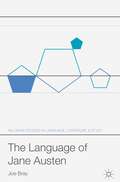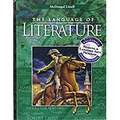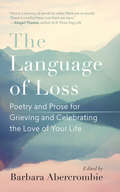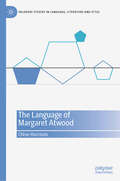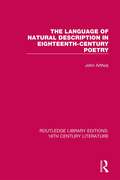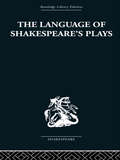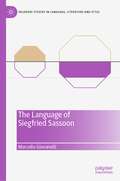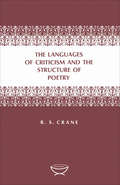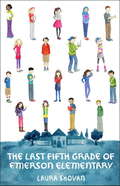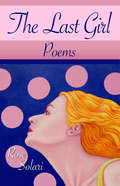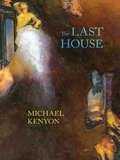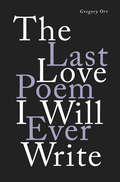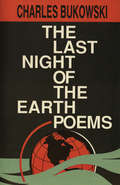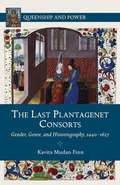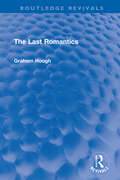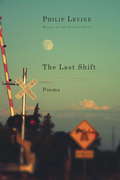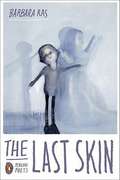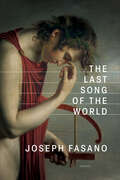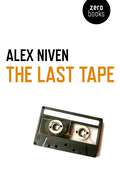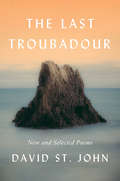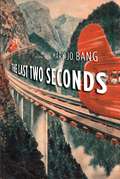- Table View
- List View
The Language of Inquiry
by Lyn HejinianThe Language of Inquiry is a comprehensive collection of her essays, and its publication promises to be an important event for American literary culture. Here, Hejinian brings together twenty essays written over a span of almost twenty-five years.
The Language of Jane Austen (Palgrave Studies in Language, Literature and Style)
by Joe BrayJoe Bray’s careful analysis of Jane Austen’s stylistic techniques reveals that the genius of her writing is far from effortless; rather he makes the case for her as a meticulous craftswoman and a radical stylistic pioneer. Countering those who have detected in her novels a dominant, authoritative perspective, Bray begins by highlighting the complex, ever-shifting and ambiguous nature of the point of view through which her narratives are presented. This argument is then advanced through an exploration of the subtle representation of speech, thought and writing in Austen’s novels. Subsequent chapters investigate and challenge the common critical associations of Austen’s style with moral prescriptivism, ideas of balance and harmony, and literal as opposed to figurative expression. The book demonstrates that the wit and humour of her fiction is derived instead from a complex and subtle interplay between different styles. This compelling reassessment of Austen’s language will offer a valuable resource for students and scholars of stylistics, English literature and language and linguistics.
The Language of Literature (Grade 8, California Edition)
by Mcdougal LittellLiterature textbook for California 8th graders.
The Language of Loss: Poetry and Prose for Grieving and Celebrating the Love of Your Life
by Barbara AbercrombieWhen Barbara Abercrombie&’s husband died, she found the language of condolence irritating, no matter how well intended. &“My husband had not gone to a better place as if he were off on a holiday. He had not passed like clouds overhead, nor was he my late husband as if he&’d missed a train. I had not lost him as if I&’d been careless, and for sure, none of it was for the best.&” She yearned instead for words that acknowledged the reality of death, spoke about the sorrow and loneliness (and perhaps even guilt and anger), and might even point the way toward hope and healing. She found those words in the writings gathered here. The Language of Loss is a book to dip into and read slowly, a collection of poems and prose to lead you through the phases of grief. The selections follow an arc that mirrors the path of many mourners — from abject loss and feeling unmoored, to glimmers of promise and possibility, through to gratitude for the love they knew. These writings, which express what often feels ineffable, will accompany those who grieve, offering understanding and solace.
The Language of Margaret Atwood (Palgrave Studies in Language, Literature and Style)
by Chloe HarrisonThis book explores Margaret Atwood’s distinctive use of language and style, across a selection of her prose texts, through reader-centred, cognitive stylistic analyses. It examines how strategies of misdirection, processes of doubling, and the creation of textual ambience play an essential role in Atwood’s contemporary prose fiction style. With reference to contemporary scholarship in stylistics and literary criticism, each chapter presents a detailed linguistic analysis of a different text from Atwood’s oeuvre, from Alias Grace (1996) to Old Babes in the Wood (2023). Above all, the book studies experiences of reading Atwood’s works, situating and contextualising her signature linguistic choices in relation to real readers’ responses to her writing. The book should be of interest to readers specialising in the work of Margaret Atwood, including those with stylistics, cognitive linguistics, and literary studies backgrounds.
The Language of Natural Description in Eighteenth-Century Poetry (Routledge Library Editions: 18th Century Literature)
by John ArthosOriginally published in 1949, this title was written in order to help establish a better understanding of the ‘stock diction’ of eighteenth-century English poetry, and, in particular, of the diction commonly used in the description of nature. The language characteristic of so much of the poetry of this period had been severely criticized for a long time. But in the twenty or thirty years prior to publication some effort had been made to review the subject and the problem. However, several questions still remained unanswered, and more exhaustive analysis needed to be undertaken. This volume was an effort to provide answers for some of these questions and to begin the analysis that was required.
The Language of Shakespeare's Plays
by B. I. EvansFirst published in 1952. This volume explores the function of verse in drama and the developing way in which Shakespeare controlled the rhetorical and decorative elements of speech for the dramatic purpose. The Language of Shakespeare's Plays explores the plays chronologically and so covers all the outstanding problems of Shakespearian language in a way that makes reference easy, without any loss of a continuing narrative.
The Language of Siegfried Sassoon (Palgrave Studies in Language, Literature and Style)
by Marcello GiovanelliThis book presents a cognitive stylistic analysis of the writing of Siegfried Sassoon, a First World War poet who has typically been perceived as a poet of protest and irony, but whose work is in fact multi-faceted and complex in theme and shifted in style considerably throughout his lifetime. The author starts from the premise that a more systematic account of Sassoon’s style is possible using the methodology of contemporary stylistics, in particular Cognitive Grammar. Using this as a starting point, he revisits common ideas from Sassoon scholarship and reconfigures them through the lens of cognitive stylistics to provide a fresh perspective on Sassoon's style. This book will be of interest to students and scholars of stylistics, war poetry, twentieth-century literature, and cognitive linguistics.
The Languages of Criticism and the Structure of Poetry
by R. S. CraneTHIS BOOK IS a considerably revised version of the Alexander Lectures for 1951-52 given by R. S. Crane.
The Languages of Criticism and the Structure of Poetry
by Ronald CraneThese vigorous lectures deal with some of the many ways in which the question of structure in poetry (here synonymous with the whole range of artistic creation in words) can be discussed. Criticism has never been, Professor Clare argues, a single discipline, but a collection of more and less distinct conceptual "languages," within any one of which a literary problem takes on a special solution. The Alexander Lectures for 1952.
The Last Fifth Grade of Emerson Elementary
by Laura ShovanLaura Shovan's engaging, big-hearted debut is a time capsule of one class's poems during a transformative school year. <P><P>Families change and new friendships form as these terrific kids grow up and move on in this whimsical novel-in-verse about finding your voice and making sure others hear it. Eighteen kids,one year of poems,one school set to close. <P><P>Two yellow bulldozers crouched outside,ready to eat the building in one greedy gulp. But look out, bulldozers.Ms. Hill's fifth-grade class has plans for you. <P><P>They're going to speak up and work together to save their school.
The Last Girl: Poems
by Rose SolariA shimmering girl who disappears in daylight. A boy who goes to war and comes back forever broken. New landscapes in which old ghosts appear, telling their bits of stories. Lovers and losses, visions and dreams--such are the people, places, and images who fill Rose Solari's third collection of poetry, The Last Girl. Moving beyond the often-narrative constructions of her previous collection, the poems in this collection tell their truths slant-wise, in spiky, inventive lines that sing their way under the reader's skin. Solari's whole-hearted lyricism of her elegiac moments, linguistic inventiveness, and range of tones sweep the reader from dark to light, from pain to joy, from unbearable loss to giddy delight. The poems in this collection represent a writer working at the peak of her powers, possessed of technical mastery, fierce perception, and a tender but unsentimental heart.
The Last House
by Michael KenyonThis is Michael Kenyon’s third full-length collection of poems. His poetry and fiction have always been alert to the underside, the angularity of the outcast, those forced by temperament or predilection or circumstance to the fringes of middle class life. Here, it is insight itself that pushes the speakers closer to the edge. The world of these poems is dark: Kenyon names and owns our clear cuts, our overpopulation, our fossil-fueled rush to oblivion, the violence embedded in sexuality. This is a book of expanded elegy, clear-eyed, unflinching amid the wreckage of its loves. Fiercely elegiac, jaggedly sexual, The Last House stands on the brink of devastation-personal, ancestral, cultural. There is transcendence here, but no redemption: it is too late. But this is also a book about love-protean, violent, perduring-love as the key to reality, even as it mystifies us or tears us apart. These are poems of deep and disturbing vision, sustained by electrifying honesty.
The Last Love Poem I Will Ever Write: Poems
by Gregory OrrA "master of the lyric poem" (Paris Review) at the top of his form writes indelibly of grief and love. In this moving, playful, and deeply philosophical volume, Gregory Orr seeks innovative ways for the imagination to respond to and create meaning out of painful experiences, while at the same time rejoicing in love and language. A passionate exploration of the forces that shape us, The Last Love Poem I Will Ever Write explores themes of survival and the powerlessness of the self in a chaotic and unfair world, finding hope in the emotions and vitality of poetry. With characteristic meditative lyricism, the poet reflects on grief and the power of language in extended odes (“Ode to Nothing,” “Ode to Words”) and slips effortlessly from personal trauma (“Song of What Happens”) to public catastrophe (“Charlottesville Elegy”). The Last Love Poem I Will Ever Write confirms Orr’s place among the preeminent lyric poets of his generation, engaging the deepest existential issues with wisdom and humor and transforming them into celebratory song.
The Last Night of the Earth Poems
by Charles BukowskiPoems deal with writing, death and immortality, literature, city life, illness, war, and the past.
The Last Plantagenet Consorts
by Kavita Mudan FinnAn examination of fifteenth-century British queens through literature and history.
The Last Romantics (Routledge Revivals)
by Graham HoughFirst published in 1947, The Last Romantics elucidates on the major preoccupations of the leaders of thought in late Victorian times such as the arts and their relation to religion and the social order. The aim is to trace their thoughts and feelings and study the relevance of the thoughts to the author's time. This leads author to examine some aesthetic theories of Ruskin, Rosetti, Morris, Pater and finally Yeats, and includes discussions on art and French literature. This book will be of interest to students of Romantic literature.
The Last Shift: Poems
by Philip LevineThe final collection of new poems from one of our finest and most beloved poets. The poems in this wonderful collection touch all of the events and places that meant the most to Philip Levine. There are lyrical poems about his family and childhood, the magic of nighttime and the power of dreaming; tough poems about the heavy shift work at Detroit's auto plants, the Nazis, and bosses of all kinds; telling poems about his heroes--jazz players, artists, and working people of every description, even children. Other poems celebrate places and things he loved: the gifts of winter, dawn, a wall in Naples, an English hilltop, Andalusia. And he makes peace with Detroit: "Slow learner that I am, it took me one night/to discover that rain in New York City/is just like rain in Detroit. It gets you wet." It is a peace that comes to full fruition in a moving goodbye to his home town in the final poem in the collection, "The Last Shift."From the Hardcover edition.
The Last Shift: Poems
by Philip LevineThe final collection of new poems from one of our finest and most beloved poets. The poems in this wonderful collection touch all of the events and places that meant the most to Philip Levine. There are lyrical poems about his family and childhood, the magic of nighttime and the power of dreaming; tough poems about the heavy shift work at Detroit's auto plants, the Nazis, and bosses of all kinds; telling poems about his heroes--jazz players, artists, and working people of every description, even children. Other poems celebrate places and things he loved: the gifts of winter, dawn, a wall in Naples, an English hilltop, Andalusia. And he makes peace with Detroit: "Slow learner that I am, it took me one night/to discover that rain in New York City/is just like rain in Detroit. It gets you wet." It is a peace that comes to full fruition in a moving goodbye to his home town in the final poem in the collection, "The Last Shift."From the Hardcover edition.
The Last Skin
by Barbara RasA third collection from a poet whose "beautiful sentences weave the miraculous and mundane into a single, luminous tapestry" (The Atlanta Journal-Constitution) Barbara has won acclaim for fluid and graceful poems that touch on the small occurrences and mysteries of daily life in the hopes of finding the secret meaning beneath them. Both intimate and wide ranging, her work is unafraid of big subjects and big feelings, and sometimes comedic. Her third collection, The Last Skin, extends and develops these qualities, offering landscapes and characters both domestic and exotic, in poignant personal lyrics of precise description that investigate beauty, grief, death, fragility, time, and loss. Here is a poet engaged with the spirit as well as the political, blending the give and take of the world into her own ecstatic rhythms.
The Last Song of the World
by Joseph FasanoJoseph Fasano’s The Last Song of the World delves into the chaos of the modern world, and searches for resilience in the face of environmental and societal devastation. Dripping with images of ancient ruins and mythological figures, these poems serve as vignettes of fatherhood, love, and desire against the backdrop of apocalyptic events.Through the documentation of ongoing violence and natural phenomena, Fasano depicts the ever-present anxieties of parenting with concision and compassion. The Last Song of the World is a love letter to the world that could be, a world as tender as it is bold, as loving as it is brutal, as beautiful as it is horrendous.
The Last Tape
by Alex NivenIn this haunting debut collection, Alex Niven explores a poetic hinterland that is also a psychological and cultural wilderness. Adopting a style grounded in the radical minimalism of northern English modernism and romanticism, Niven writes poems constructed out of traditional forms cut up and reassembled to produce an abrupt lyric realism ideally suited to the political subject matter of his verse. These are poems of anger, mourning, and finally, extraordinary optimism, announcing the arrival of a historically lucid new bearing in twenty-first-century British poetry.
The Last Troubadour: New and Selected Poems
by David St. JohnA haunting and intimately observed new collection from David St. John, a poet of soaring imagination and passionate candor In The Last Troubadour, David St. John has given us a collection of new and selected poems of astonishing beauty, precise and keenly observed but also touched with sensuality and deep feeling. Nothing is too small to escape notice (in “Guitar” St. John reflects on the beauty of that word) or too large to be explored-the suicide of a friend, the illness of a lover, or the texture of longing and desire. A sharp observer of landscapes within and without, St. John directs his empathetic gaze and vivid, inventive voice to investigating both the darkest and the most inspiring parts of being human, the small moments between friends and lovers as well as the groundswells that alter lives. At times lyrical, sometimes conversational, occasionally wry and playful, St. John’s poetry reveals an expansive vision animated by “intimacy and subtlety, and by a disturbing force, the work of an urgent sensibility and a true ear.” (W.S. Merwin) The beauty, music, and artistry of David St. John’s widely admired work is fully on display in this masterful collection.
The Last Two Seconds: Poems
by Mary Jo BangThe eagerly awaited new poetry collection by Mary Jo Bang, winner of the National Book Critics Circle AwardWe were told that the cloud cover was a blanketabout to settle into the shape of the presentwhich, if we wanted to imagine itas a person, would undoubtedly look startled—as after a verbal beratingor in advance of a light pistol whipping.The camera came and went, came and went,like a masked man trying to light a too-damp fuse.The crew was acting like a litter of mimicstrying to make a killing.Anything to fill the vacuum of time. —from "The Doomsday Clock"The Last Two Seconds is an astonishing confrontation with time—our experience of it as measured out by our perceptions, our lives, and our machines. In these poems, full of vivid imagery and imaginative logic, Mary Jo Bang captures the difficulties inherent in being human in the twenty-first century, when we set our watches by nuclear disasters, species collapse, pollution, mounting inequalities, warring nations, and our own mortality. This is brilliant and profound work by an essential poet of our time.

